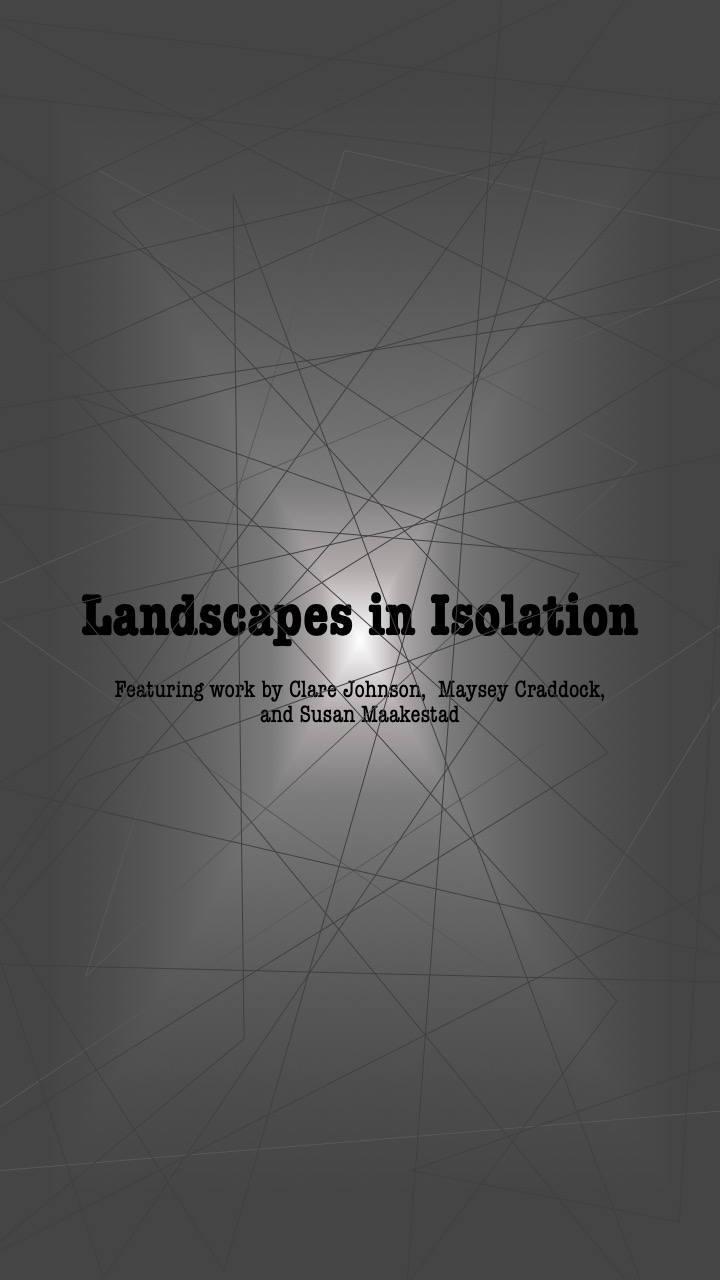
Artists: Clare Johnson, Maysey Craddock, and Susan Maakestad
Curated by Caroline Koch
This exhibition analyzes the transformations that different physical landscapes have experienced during periods of abandonment and a lack of human presence. During the COVID-19 quarantine, the majority of the population has been confined to their house. Socialization is redefined, as individuals now have to connect from a distance. With a lack of human custodianship, landscapes are once again dominated by nature, showing how it perseveres in spite of human intervention. This exhibition demonstrates the isolation one feels during quarantine, stuck in their house as the natural world flourishes around them; the destruction of human constructions due to a lack of maintenance; and the strange sense of emptiness one experiences when seeing a typically highly populated area completely desolate. During this chaotic and strange time, one must consider how this isolation effects these spaces, and how repopulation will change them. Even when everything has returned to “normal,” this period of change will have a lasting impact on these spaces and the people who interact with them. How do these spaces function without the presence of humans? How does this change how we view them, and their own identity?
Clare Johnson is a writer and visual artist originally from Seattle, and is currently participating in an artist residency at Crosstown Arts in Memphis, TN. She is a graduate of Brown University and Central Saint Martin’s College of Art and Design in London. Her art has been displayed in over forty group shows in both the United States and United Kingdom. She has taught at Lauderdale House, Cambridge University, Richard Hugo House, and Thrive Art School. Noteworthy awards include the Michael S. Harper Poetry Prize, Pride in the House, and Seattle Magazine Best of 2011 for “Best New Take on the Memoir.” Her work can be found at www.clarejohnson.com and on Instagram @clare.e.johnson.
Maysey Craddock was born and raised in Memphis. She received her BA in Sculpture and Anthropology from Tulane University and her MFA from Maine College of Art. She has participated in solo and group exhibitions throughout Germany and the United States. Noteworthy awards of hers include an Individual Artist Fellowship Award from the Tennessee Arts Commission and the Tennessee Artist Fellowship from Austin Peay State University. She has taught art in Portland and Memphis, and is represented in Memphis by David Lusk Gallery. Her work can be found at www.mayseycraddock.com.
Susan Maakestad earned her BA and MA from Central Washington University, and her MFA from The University of Iowa. Her art has been featured in publications all across the nation, such as The Painting Center and Drawing Center in New York’s online Art File and New American Paintings. Her work has been exhibited in Chicago, Minneapolis, Chapel Hill, Illinois, Nashville, and Memphis. Notable awards of hers include an ArtsAccelerator Grant from ArtsMemphis, National Endowment for the Arts fellowship from Arts Midwest, and becoming a fellow at the MacDowell Colony and Virginia Center for the Creative Arts. Her work can be found at www.susanmaakestad.com.
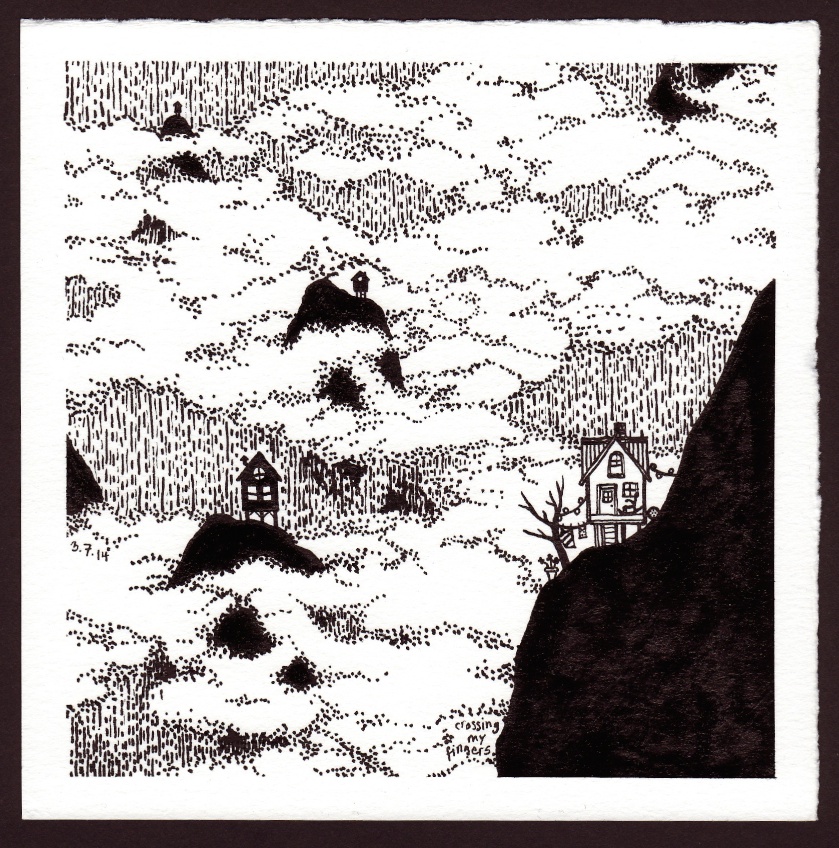
India ink on paper, 5.5 x 5.5 inches
2014
crossing my fingers
Clare Johnson had a show in a café in Seattle that recently opened, but due to the COVID-19 crisis, it was shut down early and barely seen by the general public. This piece was the last one she sold before the pandemic, and displays how people can be both near and far simultaneously, as houses are physically close together but their inhabitants are unable to connect. The clouds cover much of the space, as many people’s future feels more unsure and difficult to decipher during this period of quarantine.
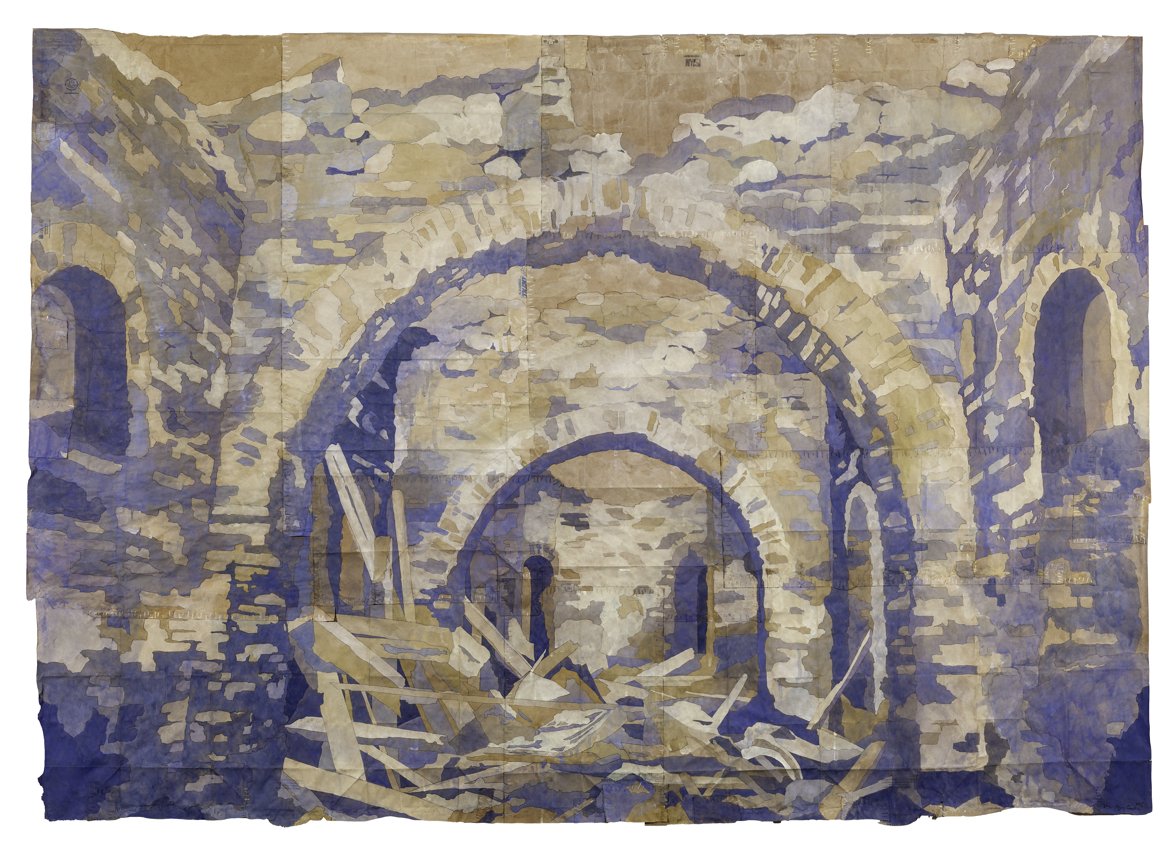
gouache and thread on found paper, 58.5 x 84 inches
2013
Angle of Repose
Maysey Craddock’s art displays the process of nature retaking a space. This image depicts an abandoned church that had fallen in that she discovered in a rural, pastoral area of Estonia. It holds a mixture of old and new, with both Roman stone and modern materials in the construction. It is a mystery why this area was abandoned; without human custodianship it has radically transformed as it has fallen into ruin.
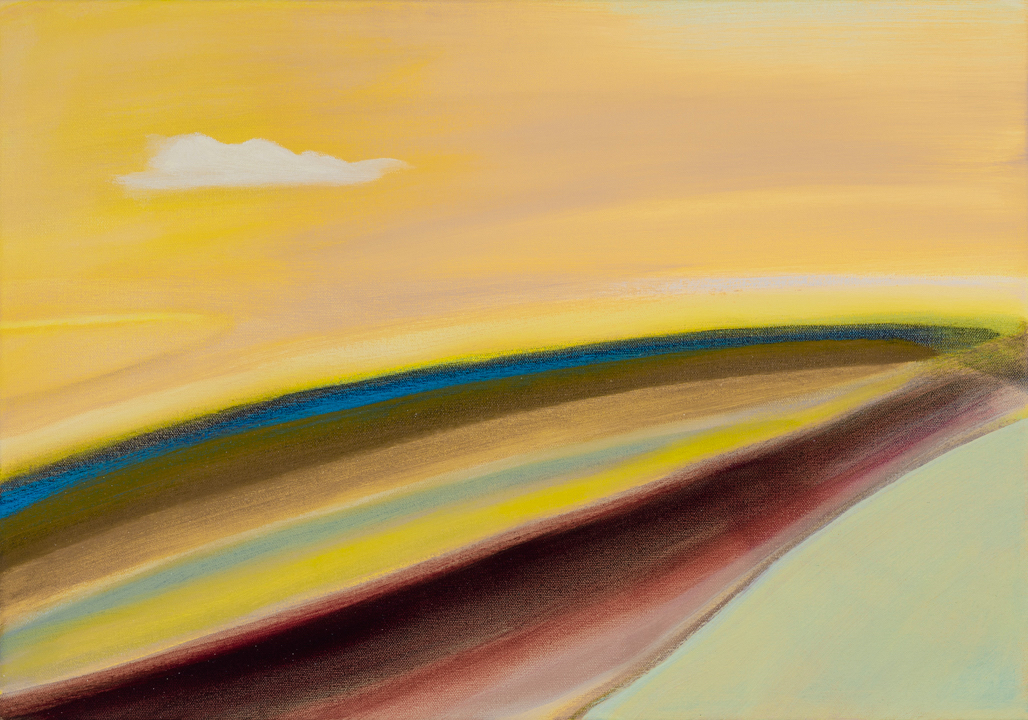
watercolor
2019
Bouyant
Humans and the environment we inhabit live together in an ever-tense situation where there is a struggle for control. Maakestad’s interest in urban landscapes, shown in a unique manner, challenge us to consider how we perceive these spaces. Landscape is constantly evolving and changing, so the abstract nature of her work reflects this uncertainty of what one is viewing.
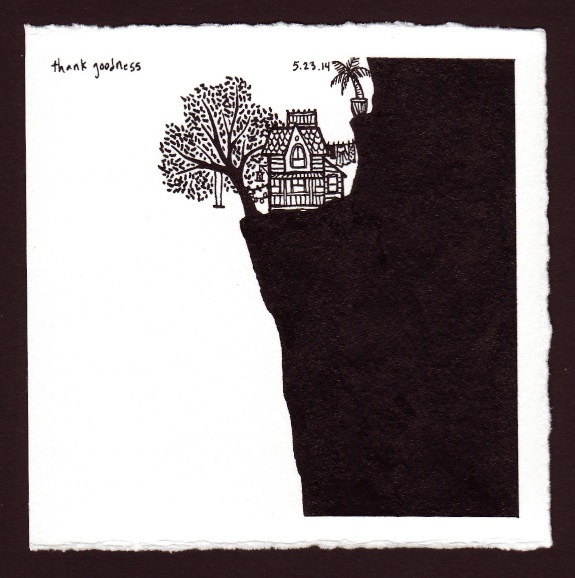
India ink on paper, 4x4 inches
2014
thank goodness
Throughout Clare Johnson’s work, houses serve as stand-ins for people. In this piece, the large amount of empty physical space mirrors the emotional emptiness individual people experience in isolation. While some houses/people may remain upright and strong while being alone, others will cripple under the weight of solitude and lack of custodianship from outsiders. This image also emphasizes the struggle to balance between somethingness and nothingness, or chaos and security.

watercolor
2019
Untitled
Maakestad’s work makes the typical evocative and artistic, transforming a piece of land seen every day into a work of beauty. The contrast between light and dark evokes images of cars driving on highways at night, without explicitly showing them. It makes us wonder: how do we perceive places like highways when humans are removed entirely?
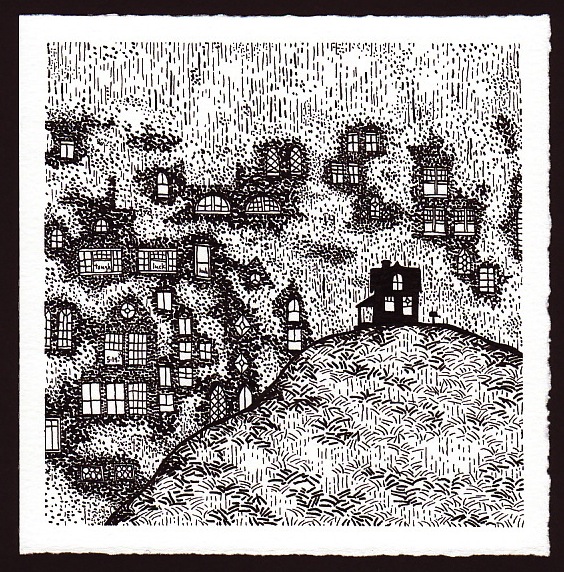
India ink on paper, 5.5 x 5.5 inches
2014
tough luck huh
In this piece, there is an emphasis on how people can be isolated and connected at the same time, both separate and together. Other people are somewhere nearby, but one cannot see or touch them, prompting a feeling of detachment. The rain evokes a sense of disruption, uncertainty, and a lack of clear vision
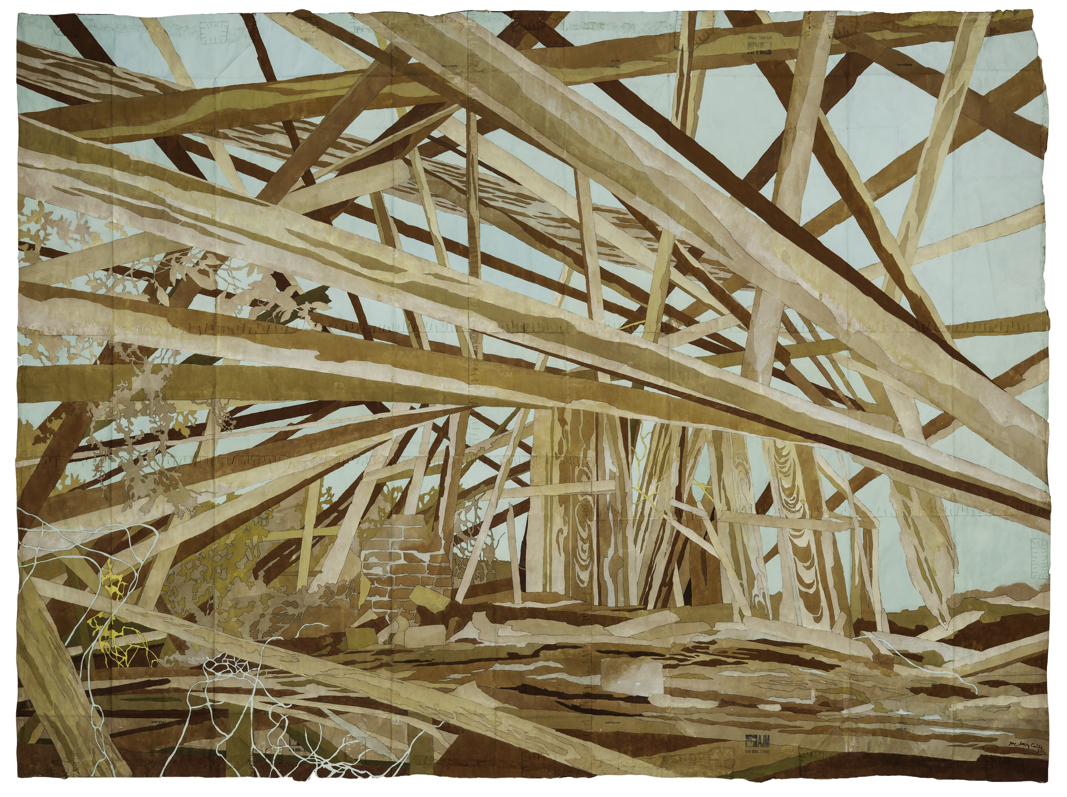
gouache and thread on found paper
2012
heart of light and silence
As this small house collapses, it falls like a spiral into the earth. This spinning effect mirrors the mental state isolation can induce, a chaotic one full of disarray and uncertainty. The collapse has altered the environment to such an extreme that it is impossible for one to envision what it looked like before, and it will never go back to being exactly the same. This mirrors the anxiety that people have for the post-quarantine world, and how they wonder if everyday life will ever return to how it once was.
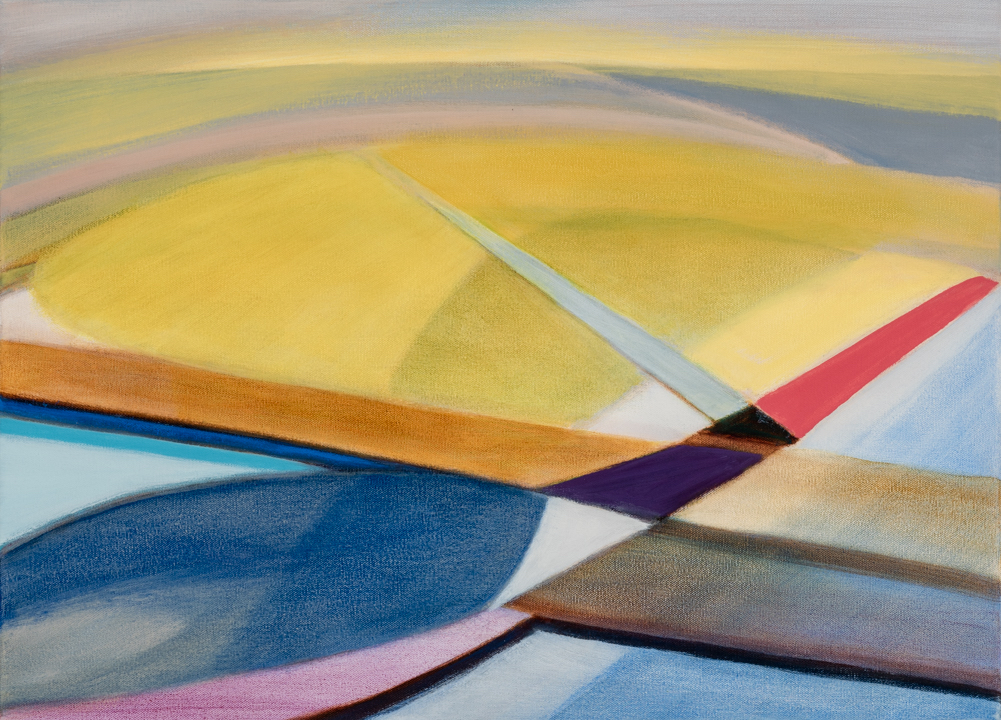
watercolor
2019
Spring Break
Even though Maakestad’s pieces do not include any human figures, she is not aiming at creating “post-apocalyptic” images. The simultaneous emptiness and fullness of a piece of land without people present can be seen here. Do people need to inhabit a space in order for it to be considered occupied and fulfilling what it can?